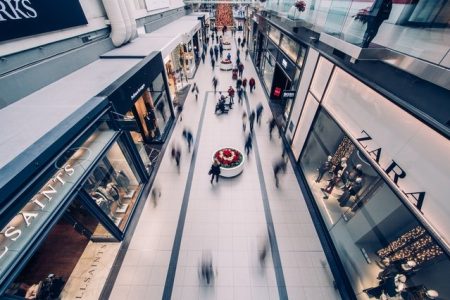We have spoken at length in previous articles about the importance of analytical data to decision making for retailers. From how it can boost sales to how it enables the streamlining of promotional content placement and optimization of existing categories. All this remains true when applied to a larger space. Regardless of the scale of your business, it is a critical factor to have in-store analytics available to you on-demand. Hence, in this post, we will explain which shopping mall analytics can we extract and how to interpret them in order to understand our customers.
Wi-Fi Analytics
However, unlike the case of a grocery store where each shopping tool can have its own tracker, things get more complicated for places like shopping malls. The question becomes, how do you track a large volume of customers as they make their way around a shopping center without being intrusive and allow them to maintain both privacy and anonymity. An added bonus would be to do it in such a way as to now require complex additional hardware.
One such solution we employ is the use of Wi-Fi tracking. Since most shopping malls already have an existing Wi-Fi infrastructure, it can be used as the bases for this system.
Most modern Wi-Fi access points have the ability to geolocate the signals they receive. The first thought that comes to mind when you hear such a statement would be that most shoppers do not connect to the Wi-Fi network in stores, so it is not possible to use that for tracking. However, there is a workaround for this. Most modern phones have inbuilt Wi-Fi and as long as it is not turned off or in Airplane Mode, their device will ping out to your access points on a regular basis even when they don’t connect to your Wi-Fi. This method is both possible and acceptable to use that for anonymous measurement. Another advantage is that this can be done in real-time.
There are, however, a few considerations to be taken into account when it comes to shopping mall analytics. Whereas in a smaller setting such as the previously mentioned grocery stores, where the whole shopping journey is analyzed, in a larger setting, such as a shopping center, due to its size, it is only possible to analyze how customers move around the main aisles. Thanks to heat maps generated by our solution, we can know the areas with more customer engagement throughout the shopping mall.
Shopping malls visit analysis
Besides, since large shopping centers are made up of individual shops of varying categories, we can use this method to gain a better understanding of what’s happening within them. Our solution makes it possible to know where customers are spending most of their time. Plus where they are most likely to head to after leaving a particular store (more on this in a bit).
With this information, managers will be able to do benchmarking with similar malls and optimize operational and strategic decisions consequently. This ranges from the placement of in-store advertising, store arrangements, and distribution to many more.
If we combine this information with the correlation matrix, as hinted to earlier, we will be able to identify the connections between categories. This metric lets us know the probability of customers visiting a category assuming they have already visited another category during their visit to the mall. For instance, we can assume that a high percentage of visitors who have visited restaurants have also spent a relevant time in fashion stores or vice versa.
Besides, it is also possible to identify the main purpose of customers’ visits to the mall. Depending on the commercial stores visited, there are four types of visit missions:
- Regular Stock-up: when customers visit a wide variety of stores because they need to buy a high amount of products.
- Daily shop: when customers visit some stores to buy products required for daily use.
- Target shopping: when customers visit a few stores because they need products that have got over.
- Urgent item: when customers visit one or two stores and ignore the rest because they need something very specific. For example, this could happen when a girl has a party and needs to go to the shopping mall to find a pair of heels.
If you have already read our shopping mission’s post – if not, you might want to take a look as we take a deeper dive into shopping missions, you can have a read here – you will notice that the categorization is the same. The only thing that changes, in this case, is the areas visited in shopping malls. Thanks to this information, managers will be able to adapt their strategies to what customers really need.
Conclusions
Data is always critical and information is king. Without which it is difficult to know what the right tools for any given task should be and hampers the decision-making process. In-store analytics change this. This process is done in a non-intrusive way so as not to intrude or interfere with the customer’s experience. By extracting shopping mall analytics, managers will be able to optimize operational and strategic decisions.






